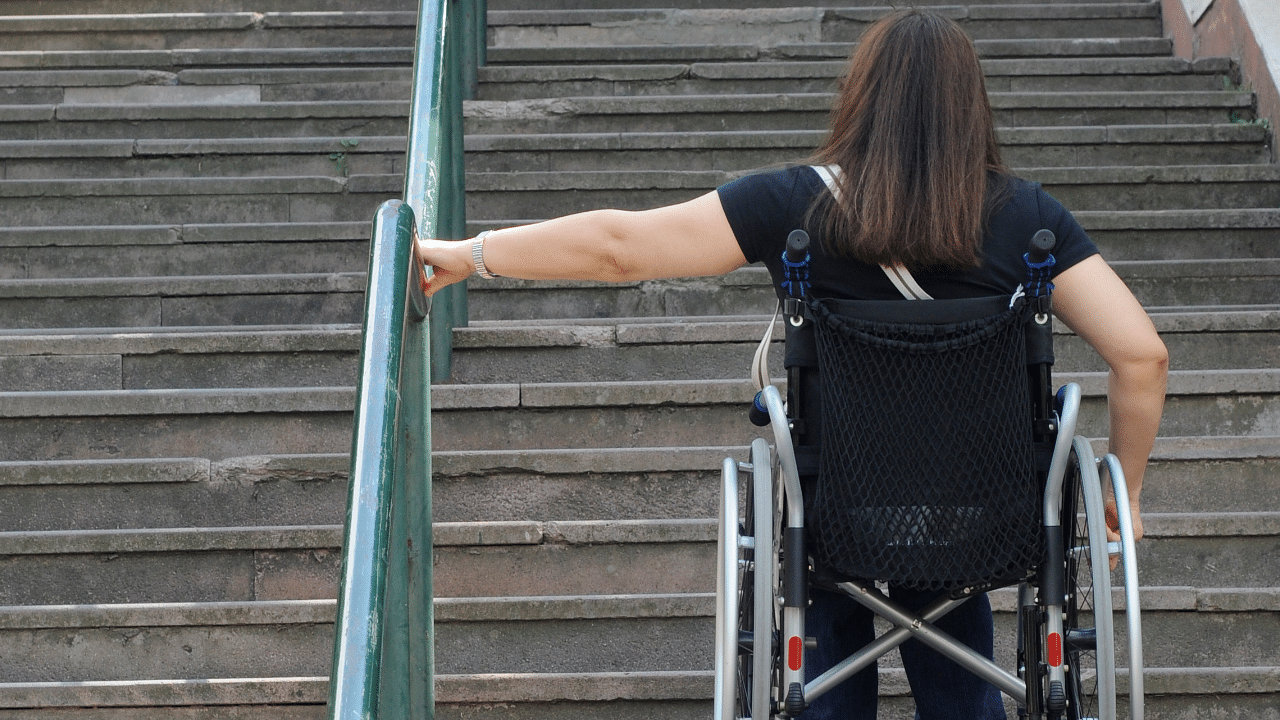
Everyone called my maternal grandmother ‘Tai’ which means older sister in Marathi, my mother-tongue.
My earliest memories of her are of a hard-working woman. My later memories of ‘Tai’ include her stoic reaction to a debilitating stroke. Paralysis and eventual neurological problems caused a steady bodily deterioration. She slowly lost control over her muscles and her ability to speak. In the last few years of her life, she communicated through her eyes.
In the initial stages, to keep her hand steady and functional, she took to writing Shri Ram (in Devanagari) on ‘rough’ papers. Her increasingly wobbly grip over the ballpoint pen meant uneven writing, but she kept at it.
One day the writing stopped.
Conventional medical aid did not help, so we tried everything else. Each family member chipped in to help her and slow down her physical deterioration.
Growing up, I did not know the word ‘disability and would not have thought of ‘Tai’ as an individual with a disability. Years later, in my doctoral program, I stumbled upon disability studies as a field of research. As a doctoral student, and later as a faculty member in a business school, conversations with research collaborators revolved around the inclusion of individuals with a disability. These discussions, bolstered by research that we learnt from, gave me a strong conviction that there are meaningful and significant benefits for organisations that employed individuals with a disability. For example, organisations benefit directly and tangibly through the process and product innovations brought about by and for such individuals by taking the reach of their products into a broader market. Such organisations also benefit from an enhanced reputation. They are seen as socially responsible contributors to society. Employing individuals with a disability could be a source of competitive advantage for the employer.
Competitive advantage
Inclusion as a business case also plays out at the level of the individual who, through employment, contributes to the broader economy through spending and paying taxes. Employing individuals with a disability could be a source of competitive advantage for the broader society.
‘Tai’ was never a part of any organisation or a participant in the formal economy. However, a focus on her and people like her is also sound economics— for the entire society.
Consider the universal design. That is, the design of products, environments, and services that can be used by individuals with disabilities. ‘Tai’ could have written ‘Shri Ram’ for longer, using a ring pen. Her simple ballpoint could have been inserted into a ring, which would stabilise her hand. Or she could have used a broad and soft pen. Such products can also be used by young children who have physical difficulties, by those who suffer from arthritis, and by those who are temporarily disabled given an accident or illness.
Consider accessible transport. A simple small ramp leading her to the rickshaw seat would have helped. The medical appointments and the few family outings would have been less stressful for her. Again, this is not only for someone with a disability. We could all use it as and when needed.
Such accessibility not only helps with inclusion but also generates economic benefits for the broader society. Let me illustrate my point by stepping beyond Tai’s case.
Maybe some of you have or work with young children with a disability. Consider accessibility for them in the education space. Reimagining infrastructures within educational institutions would mean jobs for architects, engineers and labourers. Accessible study materials would mean jobs for technologists, curriculum developers, and publishers. Employing special educators would mean jobs for trainers, sign language interpreters, and vocational rehabilitation specialists. Not to mention how these students would eventually contribute by becoming productive citizens. Inclusion, then, is a large win for all of society.
Now imagine such inclusionary efforts across places of worship, hospitals, tourism locations, public transportation, malls, homes and workplaces… The list can go on.
Our most recent census suggests that 26.8 million citizens have a disabling condition. The actual number is likely higher. This is because we do not always ask for or report disability status given the social stigma. We may also not consider those like ‘Tai’ as disabled.
As you think about the likes of ‘Tai’, think about inclusion not only from a moral standpoint but also from an economic standpoint.
As we include those with a disability through creating accessibility in all spheres of their lives, we also benefit through the creation of livelihoods for those without a disability. A win-win for everyone.
(The writer is a Professor and the Mphasis Chair for Digital Accessibility and Inclusion at IIM Bangalore)